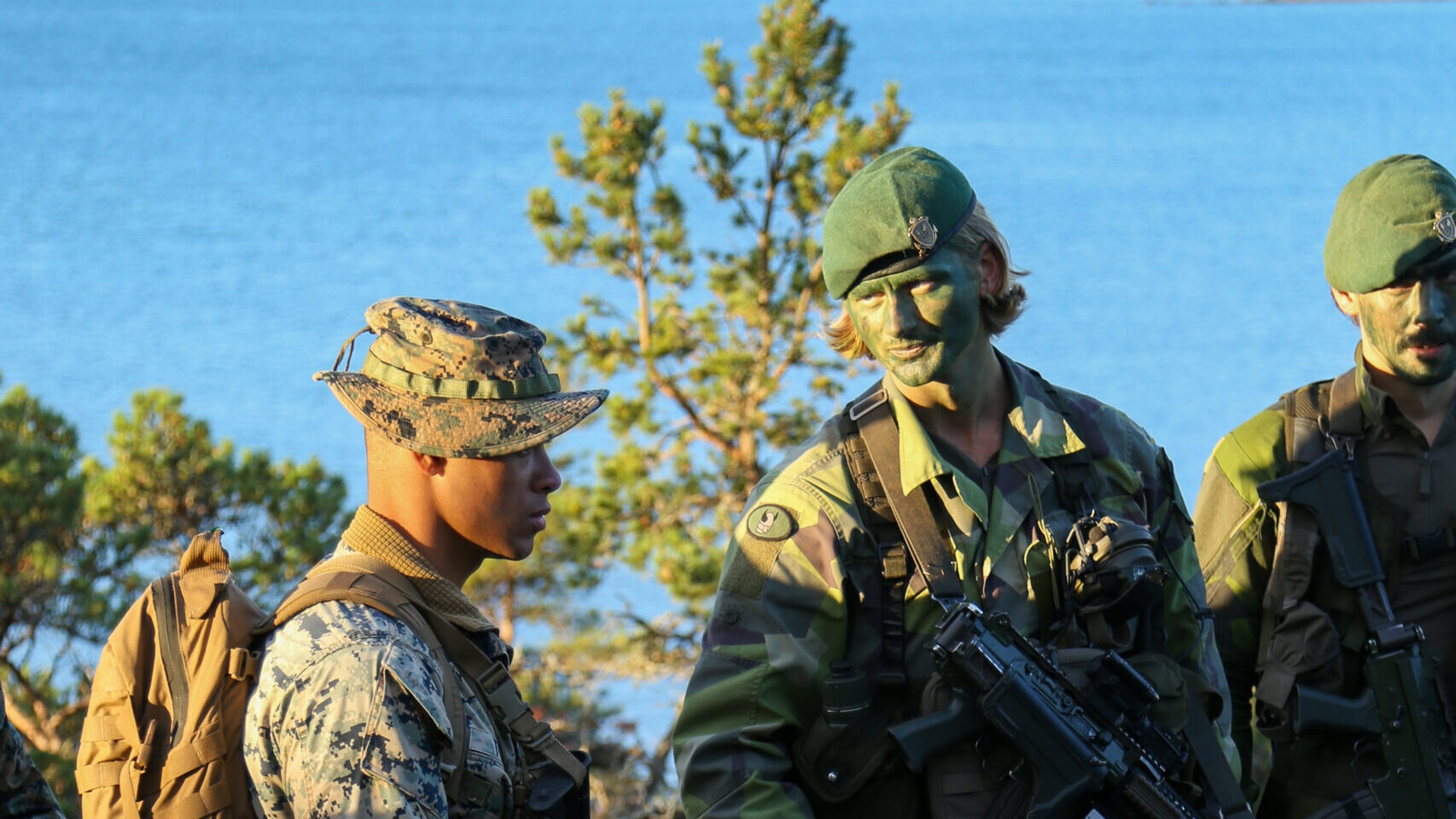
U.S. Marine Corps Sgt. Camron Tuttle (left) and Swedish Marine Cpl. Rasmus Jacobsson (right) share techniques for emplacing a forward observer team hide site in the archipelagos, during exercise Archipelago Endeavor 22 (AE22) on Berga Naval Base, Sweden, Sept. 21, 2022. (U.S. Marine Corps photo by 1st Lt. William Reckley)
DSEI 2023 — The government of Sweden plans to increase its defense spending by nearly 30 percent in 2024, according to newly released public figures, putting the Scandinavian nation on track to meet the spending goals for NATO members next year even as Stockholm waits in the wings to join the alliance.
Sweden has long made public its plans to raise defense spending significantly ahead of joining NATO, and the latest announcement includes an additional SEK 700 million ($63 million USD) on top of figures previously disclosed.
Under the budget proposal presented by the Swedish Ministry of Defense Monday, there will be an overall increase of SEK 27 billion ($2.4 billion USD) from 2023 to 2024 — a 28 percent jump — adding up to just under SEK 120 billion ($10.8 billion USD) in defense appropriations for next year. The defense budget will rise a few billion kroner higher in 2025 and 2026 as well, the ministry said in a statement posted online.
“This means that appropriations have doubled since 2020 and that Sweden will already reach the defence expenditure target of two percent of GDP according to NATO’s definition in 2024,” the MoD said.
RELATED: Sweden’s massive opportunity to rethink its role in Nordic defense
In remarks clearly referring to the Russian invasion of Ukraine, the MoD said Sweden is “facing the most serious security situation since the end of the Second World War. This requires defence forces that are ready to protect Swedish territory.
“Continuous preparedness adaptations and exercises, Sweden’s support to Ukraine and preparations for NATO membership must all continue while Sweden enhances its own capacity and war organisation in accordance with the bill Total Defence 2021–2025,” the statement said.
The increase in funds, Stockholm said, “allows for continued major investments in defence materiel. This concerns, for example, artillery systems, tactical transport aircraft, new surface combat vessels, continued development and production of JAS 39E and Blekinge-class submarines. In the coming years, defence materiel maintenance will be improved to increase availability.”
An expenditure of 2 percent of GDP has been a long-held NATO spending goal — though a minority of the 30-plus nations actually hit it. Some members, like Estonia, have urged their allies to increase their commitment to 2.5 percent.
Sweden’s highlighting of the NATO target is a clear reminder that Stockholm is eagerly awaiting its accession to the alliance, which has been on hold since it officially applied in May 2022 along with Finland. Though Finland’s application was accepted, Sweden’s was slow-rolled primarily by NATO member Turkey, which had accused Stockholm of protecting people Ankara describes as militants, among other charges.
In July, however, Turkey appeared to clear the way by forwarding Sweden’s application to its national assembly — though a vote has yet to take place due to local political machinations. Should Turkish lawmakers give the okay, the last major hurdle for Stockholm’s accession will be removed.
“Sweden will be a credible, reliable and loyal member of NATO,” the Swedish MoD’s statement says. “As such, Sweden will take part in widespread initiatives, activities and operations within the framework of NATO’s deterrence and defence measures. The Government fully supports NATO’s 360-degree perspective, i.e. that NATO is prepared in all directions – across land, air, sea, cyberspace and space domains – and against all threats and challenges.”





















